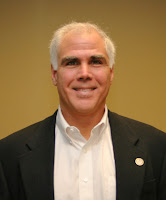 It's been a while since I've posted anything on this blog site, so apologies to the two or three of you that have actually read anything I've posted here (*sigh*) but I've recently committed to keeping this blog site more up-to-date. In future passages I hope to write more about some of the following:
It's been a while since I've posted anything on this blog site, so apologies to the two or three of you that have actually read anything I've posted here (*sigh*) but I've recently committed to keeping this blog site more up-to-date. In future passages I hope to write more about some of the following:1. Marzano Research Lab's ongoing independent study of the effect of Promethean's ActivClassroom on student achievement;
2. A recent EdWeek article in which highly esteemed educational research scholar Dr. Gene V. Glass offers an unsolicited (by Promethean) endorsement of the study, saying that "Under the circumstances of trying to run experiments in realistic conditions 'in the field,' it was very well done;
3. Analogies to better represent the findings of this research through analogies, impact models and reasonable extrapolations (like Dr. Glass's interpretation in the above article, "One way of phrasing their findings is that a class employing the technology would gain 12 months' achievement in a 9-month school year."
4. Brain research and recently published work by Dr. John Medina (check out his amazing book and website: Brain Rules); and,
5. General ruminations on the transformation of education from a behaviorist pedagogical model to a more constructivist model.
But first, I'd like to apply Richard Mayer's "Multiple Representation Principle" to a very personal context: an internal exploration of a knee injury I sustained in an "Old Dudes" Lacrosse Tournament, which is the subject of my latest blog entry (granted this over a year ago!).
Dr. Mayer's principle is this: "It is better to present an explanation in words and pictures than solely in words." Simple, yet profound. The implications of this principle in the context of teaching and learning could be of great help in unlocking the mysteries of improving student engagement and academic achievement.
But for me, I am applying this principle to better understand the extent to which I messed up my right knee in that 7-game lacrosse-a-palooza in Florida a few years ago. I'm going to need the "words" of my orthopedic surgeon to make sense of above "picture" that was taken yesterday by a very kind MRI technician at Evergreen MRI.
I have very general idea of what I'm looking at, but I suppose this is an image of a pain-inducing injury? I think I see bone, maybe marrow? It looks more like some type of sliced lunch meat.
Clearly Magnetic Resonance Imaging technology has transformed how physicians analyze the nature and extent of their patients' injuries. It is reasonable to infer that with this new technology-enhanced visual information, physicians are able to make more informed decisions and share their analysis in such a way that makes more sense to their patients.
MRI technology has been available since the 1980s, but I don't think it's too much of a stretch to apply this same multiple representation concept to today's classrooms which, thanks to interactive multimedia technologies, is now possible. Though we are just scratching the surface at the moment, I think the "value add" that these technologies bring to teachers and students is immediately obvious and backed by a growing body of research.
I have an appointment with my physician tomorrow to hear the words that go along with this picture.



 Well, it's been a while. For that I apologize. However, given the calamitous nature of this past year's political skullduggery, I should be afforded a modicum of lenience.
Well, it's been a while. For that I apologize. However, given the calamitous nature of this past year's political skullduggery, I should be afforded a modicum of lenience. It's been one heck of a year. I've beared witness to many things - including this beautiful grizzly bear at Denali National Park in the early fall. She was, quite literally, crossing the road. Why? To get to the berries on the other side!
It's been one heck of a year. I've beared witness to many things - including this beautiful grizzly bear at Denali National Park in the early fall. She was, quite literally, crossing the road. Why? To get to the berries on the other side!




